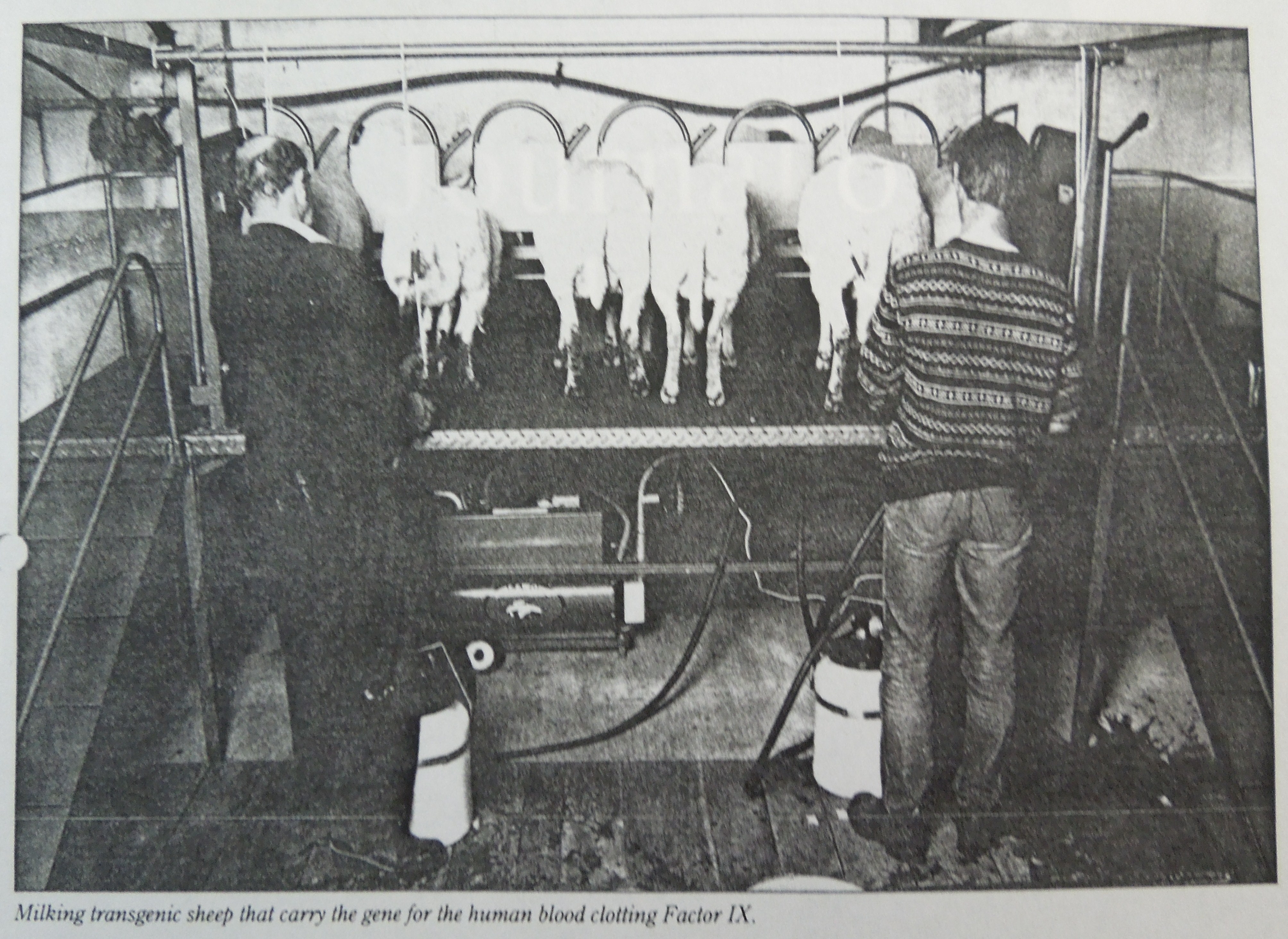In the AFRC News, July 1989 article, ‘Transgenesis – a new way to better livestock’, scientists Alan L. Archibald, J. Paul Simons, Ian Wilmut and A. John Clark discuss various ways that gene transformation can improve livestock. They note that transgenesis combines recombinant DNA and embryo manipulation technologies and is a new way to approach genetic improvement. According to this article, the transgenic programme at the Institute of Animal Physiology and Genetics Research (IAPGR) in Edinburgh is ‘not directed at producing agriculturally improved livestock’; instead ‘dairy animals (sheep) are being used as vehicles for the production of important human proteins such as clotting Factor IX (FIX) and alpha-1-antitrypsin (AAT)’. The authors write that the short term benefits of transgenic animals are mainly to ‘increase the understanding of the genetic control of performance than they are to make a contribution to agricultural production’. Since this was written in 1989, it would be interesting to know if any of these short term benefits developed into anything long term! This image shows some scientists milking transgenic sheep carrying the gene for human blood clotting Factor IX.
This image shows some scientists milking transgenic sheep carrying the gene for human blood clotting Factor IX.
Towards Dolly
Edinburgh, Roslin and the Birth of Modern Genetics

The Picture is of Bill Seawright shepherd and George Davidson senior shepherd, both worked at Dryden
Dear Calum,
Thank you for identifying the two men in the photograph and where they worked – it’s appreciated! All best.